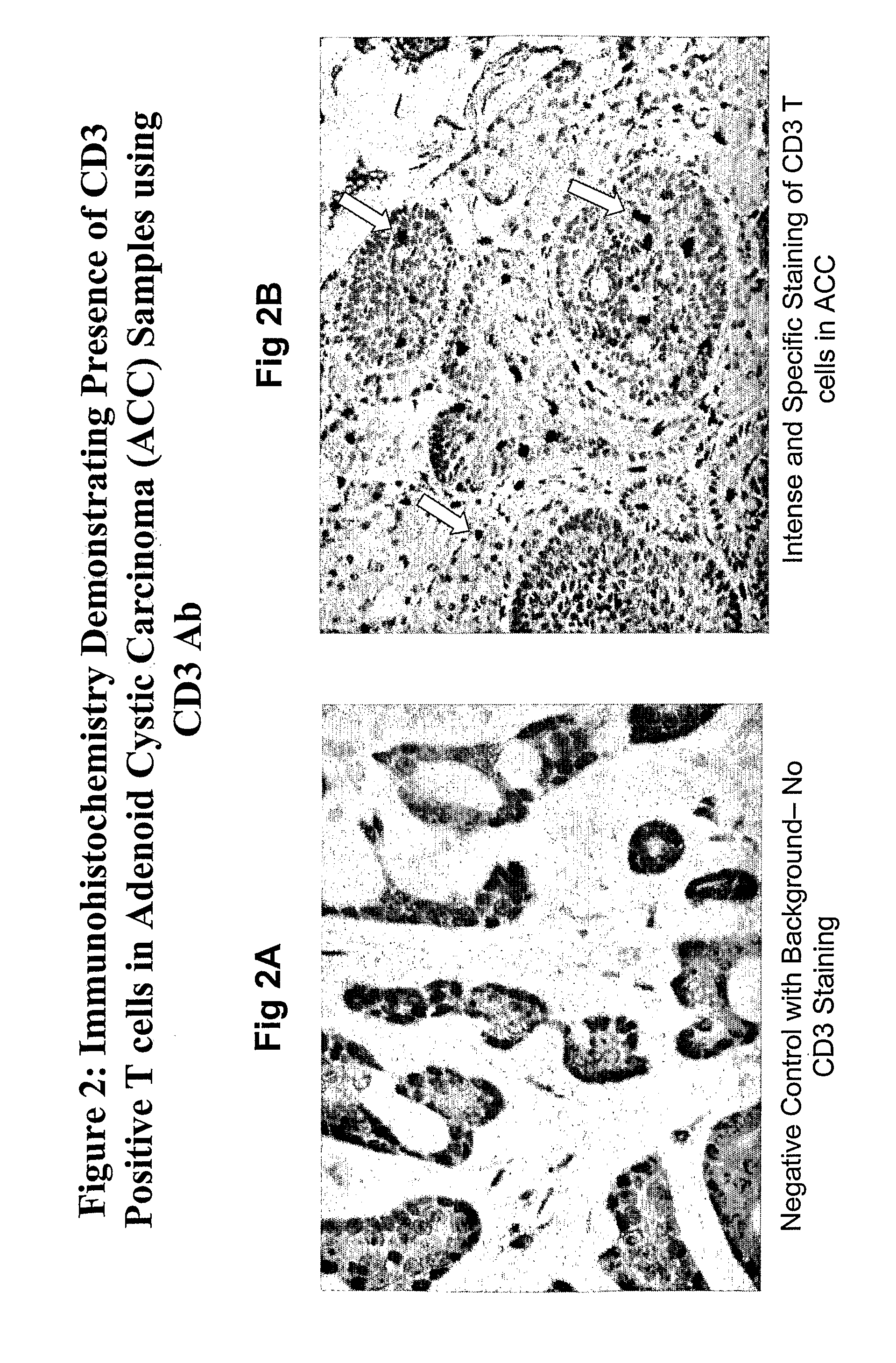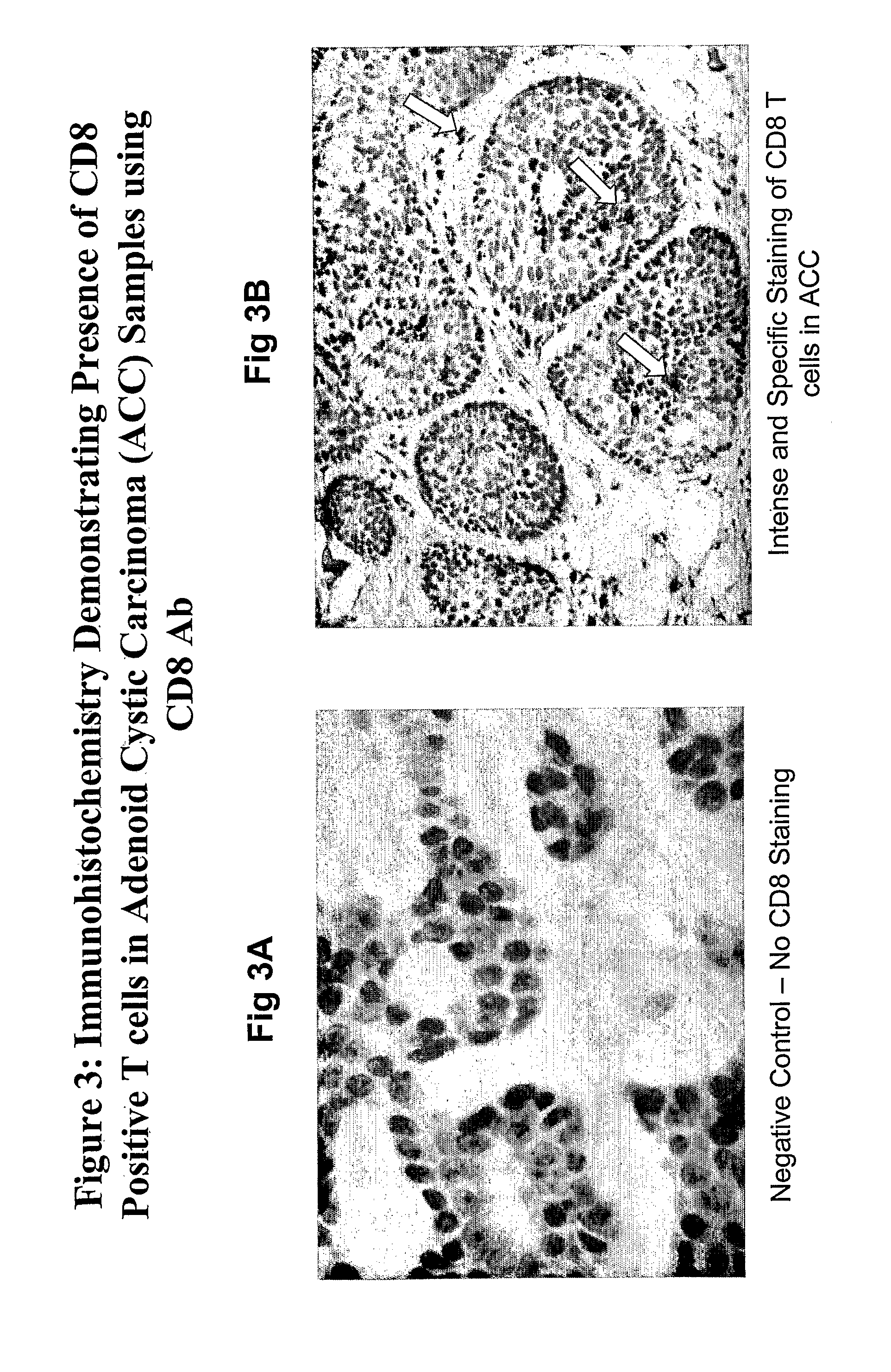Ovr110 antibody compositions and methods of use
a technology of ovr110 and composition, which is applied in the field of antiovr110 antibody composition, can solve the problems of many side effects, adversely affecting the long term prognosis, and the expression of ovr110 has not been demonstrated in adenoid cystic, and achieve the effect of reducing the suppressed immune function
- Summary
- Abstract
- Description
- Claims
- Application Information
AI Technical Summary
Benefits of technology
Problems solved by technology
Method used
Image
Examples
example 1
Monoclonal Antibody Producing Hybridomas
[0316]The following MAb / hybridomas of the present invention are described below:
[0317]Ovr110.A7.1, Ovr110.A10.1, Ovr110.A13.1, Ovr110.A31.1, Ovr110.A57.1, Ovr110.A72.1 (previously identified as Ovr110 A22.1), Ovr110.A77.1, Ovr110.A87.1, Ovr110.A89, Ovr110.A 99.1, Ovr110.A102.1, Ovr110.A107, Ovr110.C1, Ovr110.C2, Ovr110.C3.2, Ovr110.C4, Ovr110.C5.1., Ovr110.C5.3, Ovr110.C6.3, Ovr110.C7.1, Ovr110.C8, Ovr110.C9.1, Ovr110.C10.1, Ovr110.C11.1, Ovr110.C12.1, Ovr110.C13, Ovr110.C14, Ovr110.C15, Ovr110.C16.1, Ovr110.C17.1, Ovr110.D9.1, Ovr110.I1, Ovr110.I2, Ovr110.I3, Ovr110.I4, Ovr110.I6, Ovr110.I7, Ovr110.I8, Ovr110.I9, Ovr110.I10, Ovr110.I11, Ovr110.I13, Ovr110.I14, Ovr110.I5, Ovr110.I16, Ovr110.I17, Ovr110.I18, Ovr110.I20, Ovr110.I21, Ovr110.I22, Ovr110.J1, Ovr110.J2 and Ovr110.J3. If the MAb has been cloned, it will get the nomenclature “X.1,” e.g., the first clone of A7 will be referred to as A7.1, the second clone of A7 will be referred to as A...
example 2
IHC of Ovr110 Expression in Head and Neck and Endometrial Cancers
[0319]Head and neck adenoid cystic carcinoma (ACC) and endometrial cancer samples from various tumor locations were evaluated for Ovr110 expression by Immunohistochemistry (IHC).
[0320]Formalin-fixed, paraffin-embedded tissue blocks of normal or cancerous tissues were retrieved from the Surgical Pathology collections of the University of Colorado Health Science Center (UCHSC). Tissues were sectioned to 5 μm, mounted on charged glass slides (Superfrost Plus; Fisher Scientific, Pittsburgh, Pa.), and baked overnight at 60° C. Deparaffinization with xylene and rehydration through a graded alcohol series was followed by blocking of the endogenous peroxidase activity with 3.0% hydrogen peroxide for 15 minutes. Antigen retrieval was performed in a decloaking chamber (Biocare Medical, Walnut Creek, Calif.) by heating the slides in citrate buffer (10-20 mmol / l, pH 6.0) at 120° C. for 10 minutes. Immunohistochemical staining for ...
example 3
Inverse Correlation of T Cell Invasion to Ovr110 Expression in Tumors
[0333]Tumor samples from various tissues were evaluated by immunohistochemistry (IHC) for Ovr110 expression and tumor-associated T cell lymphocyte infiltration. T cell lymphocyte infiltration was evaluated by staining for CD3, CD8 and / or CD69. Positive CD3 staining indicates the presence of peripheral T cell lymphocytes and positive CD8 staining indicates the presence of suppressor / cytotoxic T cell lymphocytes which promote immune response to tumors. CD69 antigen is not expressed on resting peripheral blood lymphocytes but is amongst the earliest antigens to appear upon activation of lymphocytes. Positive CD69 staining indicates the presence of activated suppressor / cytotoxic T cell lymphocytes.
IHC Methods
[0334]Formalin-fixed, paraffin-embedded tissue blocks of normal or cancerous tissues were retrieved from the Surgical Pathology collections of the University of Colorado Health Science Center (UCHSC) for immunohist...
PUM
| Property | Measurement | Unit |
|---|---|---|
| size | aaaaa | aaaaa |
| concentration | aaaaa | aaaaa |
| molecular weight | aaaaa | aaaaa |
Abstract
Description
Claims
Application Information
 Login to View More
Login to View More - R&D
- Intellectual Property
- Life Sciences
- Materials
- Tech Scout
- Unparalleled Data Quality
- Higher Quality Content
- 60% Fewer Hallucinations
Browse by: Latest US Patents, China's latest patents, Technical Efficacy Thesaurus, Application Domain, Technology Topic, Popular Technical Reports.
© 2025 PatSnap. All rights reserved.Legal|Privacy policy|Modern Slavery Act Transparency Statement|Sitemap|About US| Contact US: help@patsnap.com



